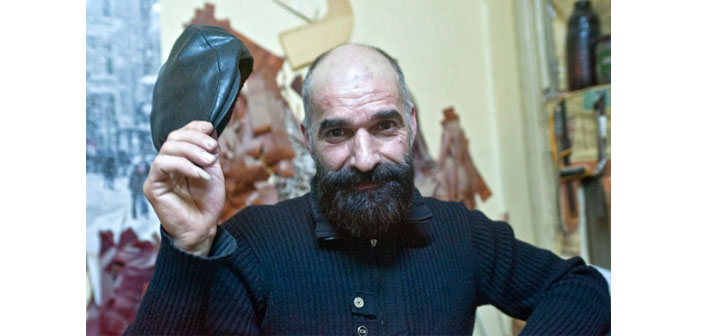Today, musical instrument making is not a very popular occupation, but the number of people interested in this craft is increasing. Two weeks ago, we published an interview with Istanbul-born Vahank Nogigosian, one of the rare Stradivarius violin repairers in Turkey. This week, we introduce Iranian santur-maker Amir Homayunfard, who has been living in Turkey for 7 years.
Born
in Shahrud in 1974 and raised in Tehran, Iranian santur-maker Amir
Homayunfard lives in Istanbul for 7 years. He makes and sells santur
in his workshop in Şişhane, he repairs instruments and tries to
promote this 2500-year-old instrument in Turkey and in the world.
Making other instruments in Iran, Homayunfard opened a workshop with
his friends in Istanbul, but he left that workshop after a while and
opened a smaller one only for himself in Şişhane. He says, “I
started to make santur in my workshop, but no one in Turkey knew what
it is. They were mistaking it for qanun. That is why I undersold the
santurs I made in my first years in Istanbul. Then, the instrument
became known gradually. I got on TV channels, including TRT [national
TV channel] as a santur artist. As the santurs I made appeared on
streets and TV, it became popular.”
Homayunfard says, “People on the streets are playing it wrongly, but that's fine.” He explains why: “It is an ancient instrument which was invented in Iran 2500 years ago. There was no string before; they were using catgut. After it was invented in Iran in 5th century BC, it reached Turkey, Iraq and Afghanistan. Now, it is being played even in western countries like Italy, Greece, Germany. Of course, there are differences between the santurs in the west and Iran.”
The quality of santur depends on the tree that is used to make it. Homayunfard tells about other factors and how we can tell if a santur is of quality: “In the past, craftsmen used to make an evaluation on the basis of ratios. It is said that the bridges in the santur determines the 70% of the sound it produces. You don't see those bridges, it is a formula and every master has a secret formula. The remaining 30% is based on the quality of the tree. And the string is not that important.”
A love story started in a wedding ceremony
“When I was 5 or 6, we went to a wedding ceremony, and I saw that someone was playing santur. I couldn't have taken my eyes off of the santur. I wanted to go near it, but they didn't let me. Then, I managed to escape and went to the man playing santur. I watched him play without batting an eyelid.” This is how he met santur. A few years later, he made his first santur by placing strings on a drawing board. Since he didn't know about tuning, he couldn't have managed to produce a sound, but he tried to play it everyday. Once in a while, he performed on the street for his friends. Homayunfard says that he owes a lot to that flimsy instrument: “I had a relative who was an art teacher. He saw the instrument I made and took me to one of his friends, who was playing santur very well. He took my instrument, tuned it and started to play it. I remember that I was surprised how he managed to produce sound. Then, he gave his own santur; it was larger and more beautiful, of course. As I was playing, my eyes filled with tears. I was very young, but I felt deeply touched.” That friend who saw his passion encouraged him to make his own santur. He tells about the story of his first real santur: “Santur has 75 holes placed symmetrically. I had hard times to make those holes; none of my first tries were symmetrical. Then I practiced a lot. When I was 14, I made my first santur and sold it. I bought a motorcycle. Since then, I live alongside with santur.”
Instrument's journey from Iran to Istanbul
He says that cheap and poor santurs are coming to Istanbul from Iran lately and he only makes santur to order. He says that his products can last for 10 years. He also repairs santur. He also notes that some santurs from Iran are hard to use in Istanbul because of the difference of climate: “Air in Iran is dry, whereas air in Istanbul is humid. A santur which is made out of a very good tree there starts to rot here after 2 years.”
Homayunfard
invented a special santur and secured it by patent. “If you tune
your santur for a maqam, you can only play that maqam, since it
doesn't have frets. I placed pegs on the santur I made, which enable
you to play other maqams. Some people took it to Italy and Germany. I
haven't taken it to Iran, because my idea might be stolen there,
since the patent law doesn't function there.”






